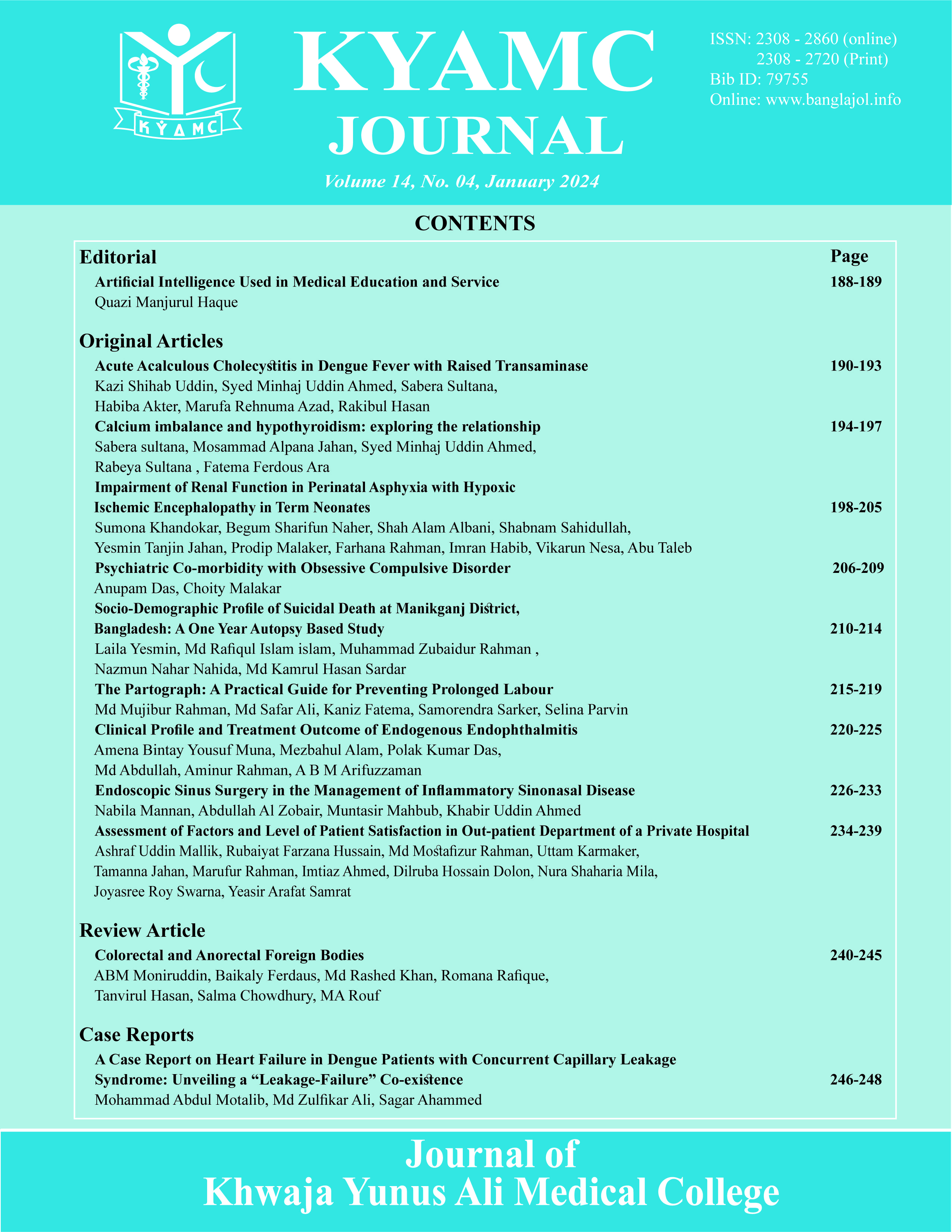Impairment of Renal Function in Perinatal Asphyxia with Hypoxic Ischemic Encephalopathy in Term Neonates
DOI:
https://doi.org/10.3329/kyamcj.v14i04.69526Keywords:
Perinatal asphyxia, Apgar score, Sarnat Staging of Hypoxic ischemic encephalopathy, Term Neonates, Gestational age, eGFR, Renal impairmentAbstract
Background: Perinatal asphyxia is a major cause of neonatal morbidity and mortality worldwide including in Bangladesh. It causes damage to almost every tissue and organ of the body. In kidneys, renal insufficiency may occur promptly even within 24 hours of asphyxia. So, renal function assessment is essential for accurate management of metabolic derangement in neonates as prolonged hypoxic ischemic episode can lead to irreversible cortical necrosis with onset of acute renal failure.
Objectives: To find out renal impairment and to measure serum creatinine, serum electrolyte and eGFR, Also to compare biochemical parameters level and determine the frequency of AKI among the asphyxiated neonates with HIE.
Materials and Methods: This cross-sectional study was conducted in the neonatal care unit of Sir Salimullah Medical College Mitford Hospital, Dhaka. A total of 70 term neonates suffered from perinatal asphyxia with different stages of Hypoxic ischaemic encephalopathy. A ‘p’ value <0.05 was considered as statistically significant.
Results: Among 70 term neonates having HIE, it was observed that 62.9% neonates had moderate birth asphyxia followed by mild (28.6%) and severe (8.6%). Newborns with SGA (71.4%) had more renal impairment than AGA. Among biochemical variables Blood urea and serum creatinine were high and eGFR was low in stage Π. Among electrolytes, hyponatremia was present in 24.3% of cases and more in stage Π, and hyperkalemia was present in 21.4% of cases and more in stage Ш. AKI was found in 18.6% of cases, Risk (stage 1) was 77%, Injury (stage Π) was 15.3% and Failure (stage 3) was 7.7 %.
Conclusion: Renal impairment was found in 18.5% of term asphyxiated neonates with HIE according to pRIFLE and AKIN criteria and Biochemical parameters showed no significant changes between different stages of HIE.
KYAMC Journal Volume: 14, No: 04, January 2024: 198-205.
Downloads
135
228
Downloads
Published
How to Cite
Issue
Section
License
Copyright (c) 2024 KYAMC Journal

This work is licensed under a Creative Commons Attribution-NonCommercial 4.0 International License.




